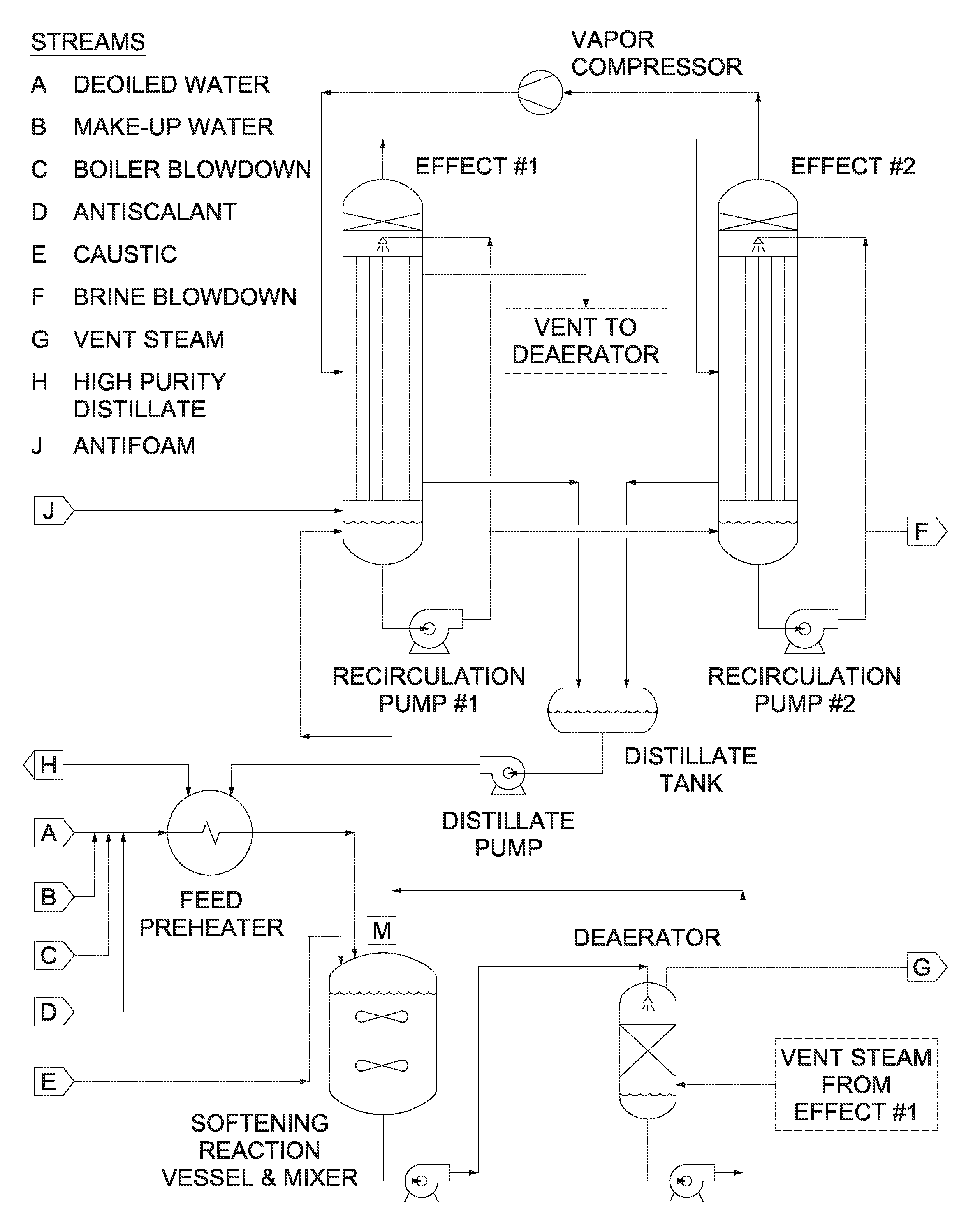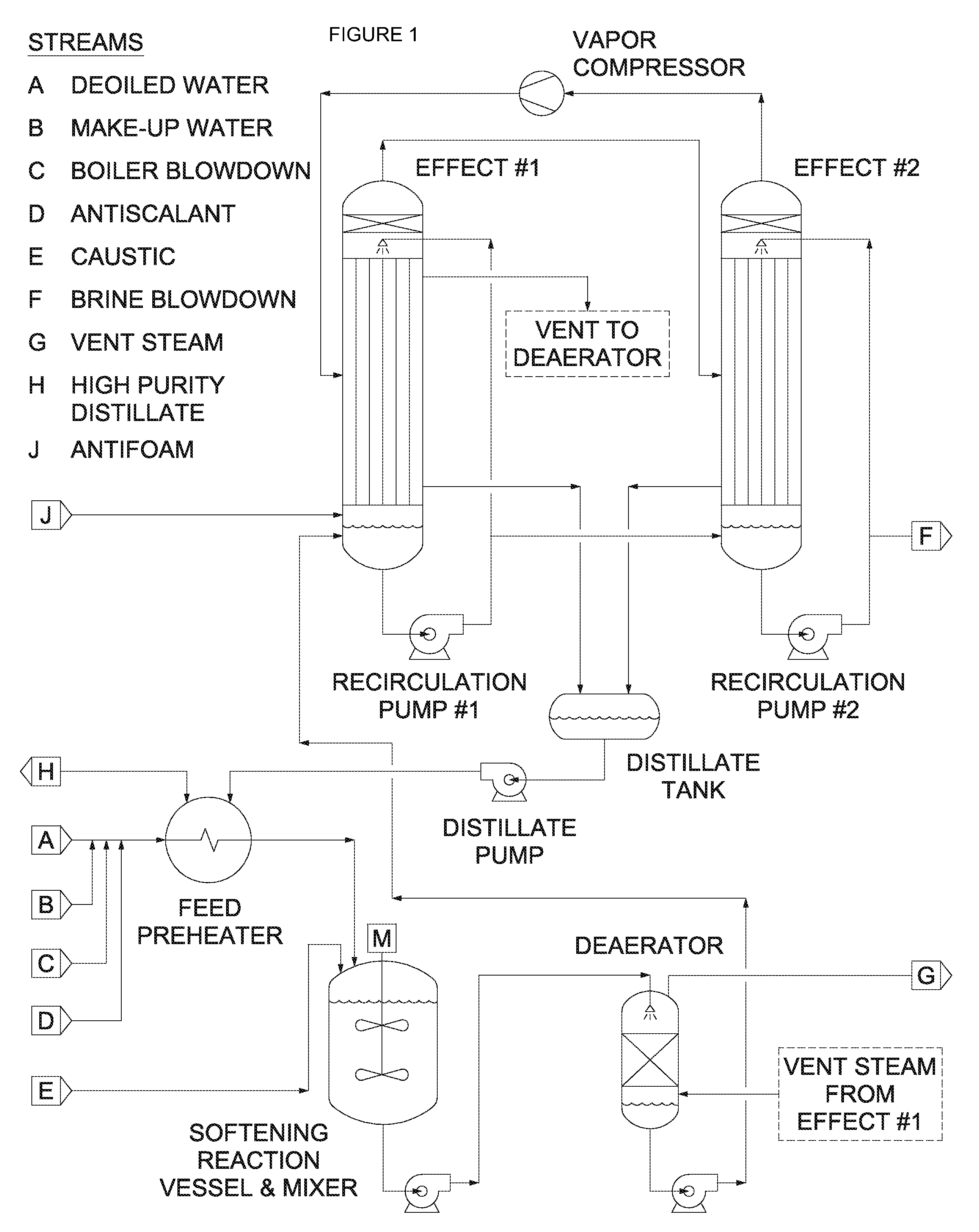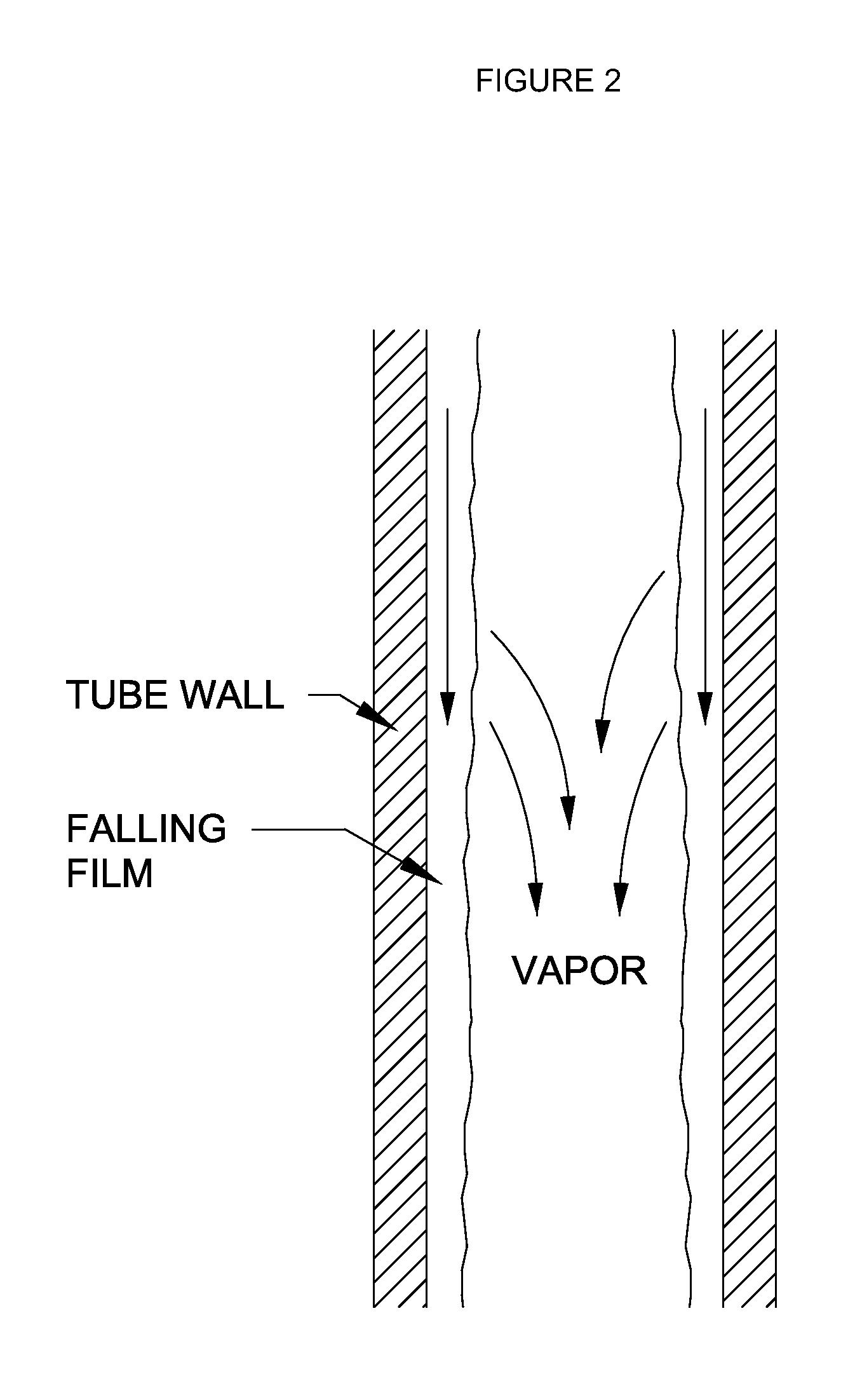Method for recycling deoiled water using counterflow falling-film evaporators
- Summary
- Abstract
- Description
- Claims
- Application Information
AI Technical Summary
Benefits of technology
Problems solved by technology
Method used
Image
Examples
example
[0055]Embodiments and aspects of the invention may be further understood by reference to the example below. The example should be understood to show exemplary aspects of the invention, but should not be construed to limit the claims.
[0056]For the purposes of this example, assume a 5,000 bpd SAGD oil production facility having a continuous boiler feedwater requirement of 273 m3 / h. The high pressure drum boiler produces steam for injection into the underground formation. An oil and water mixture is pumped to the surface through the producing well. The oil is separated and removed as product. The separated water receives further treatment for oil removal to the order of 3 / h and that the evaporator system concentrates this stream approximately 20 times to produce a high-purity distillate stream of 273 m3 / h (equal to the boiler feedwater requirement) and a brine blowdown stream of 14 m3 / h.
[0057]Consider a conventional evaporator system that is designed with the process as described in th...
PUM
| Property | Measurement | Unit |
|---|---|---|
| Volume | aaaaa | aaaaa |
| Volume | aaaaa | aaaaa |
| Volume | aaaaa | aaaaa |
Abstract
Description
Claims
Application Information
 Login to View More
Login to View More - R&D
- Intellectual Property
- Life Sciences
- Materials
- Tech Scout
- Unparalleled Data Quality
- Higher Quality Content
- 60% Fewer Hallucinations
Browse by: Latest US Patents, China's latest patents, Technical Efficacy Thesaurus, Application Domain, Technology Topic, Popular Technical Reports.
© 2025 PatSnap. All rights reserved.Legal|Privacy policy|Modern Slavery Act Transparency Statement|Sitemap|About US| Contact US: help@patsnap.com



